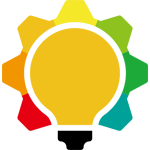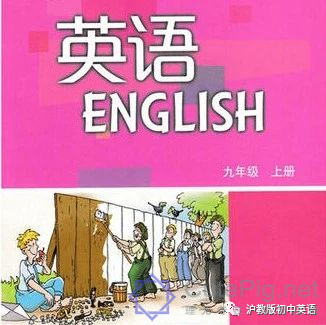广州、深圳、上海、沈阳 初中英语
本公众号是由拥有10年一线教学经验的初中英语老师精心运营!
关注沪教版初中英语,领取海量学习资源!
↓↓↓

点击↓↓↓可以听取录音


var audio1 = new BeePlayer({element: document.getElementById(“audio-1”),music:{title: “九年级上册单词Unit 1.mp3”, author: “沪教版初中英语”,pic: “/wp-content/plugins/beepress/lib/player.png”, url: “http://res.wx.qq.com/voice/getvoice?mediaid=MzU4MDg4NzUyOF8yMjQ3NDg5NDcy”}}); audio1.init();
golden adj. [‘gəʊld(ə)n]
金的;金色的
Reading
var audio2 = new BeePlayer({element: document.getElementById(“audio-2”),music:{title: “九年级上册课文Unit 1.mp3”, author: “沪教版初中英语”,pic: “/wp-content/plugins/beepress/lib/player.png”, url: “http://res.wx.qq.com/voice/getvoice?mediaid=MzU4MDg4NzUyOF8yMjQ3NDg5NDcz”}}); audio2.init();
Archimedes and the golden crown
One day in ancient Greece, King Hiero asked a crown maker to make him a golden crown. At first, he was very happy with it.
“it’s a nice crown, isn’t it?” he asked his men. Later, however, he began to doubt that it was a real golden crown. “Is it made completely of gold?” he wondered. He sent it to Archimedes and asked him to find out the truth.
“This problem seems difficult to solve. What should I do?” thought Archimedes.
Archimedes was still thinking about this problem as he filled his bath with water. When he got into the bath, some water ran over.
“That’s it!” shouted Archimedes. “I know how to solve the king’s problem!”
Archimedes went straight to the palace to see the king. First, he weighed the crown and asked the king for some gold of the same weight.
Next, he put two pots into two big bowls and filled both pots with water. He put the gold into one pot and some water ran into the bowl. Then he put the crown into the other pot. This time, even more water ran into the bowl.
“Look at this,” said Archimedes to King Hiero. “A crown made completely of god displaces less water than a crown made of gold and another metal. This crown displaced more water than gold and another metal. This crown displaced more water than gold of the same weight, so I’m certain that it’s not completely made of gold.”
“The crown madder tricked me , didn’t he? What a bad man he is!” shouted King Hiero. He then sent the crown maker to prison.
阿基米德和金冠
阿基米德和金冠在古希腊,有一天,希罗国王请求一位造皇冠的人给他做一个金冠。起初,他对它很满意。
“这顶王冠很漂亮,不是吗?”他向他的人询问。然而,后来他开始怀疑那是真正的金冠。“这完全是金子做的吗?”他想知道。他把信寄给阿基米德,请他查明真相。
“这个问题似乎很难解决。我该怎么办呢?”阿基米德想。
阿基米德还在思考这个问题,他在洗澡水。他洗完澡后,溅了些水。
“就是这样!”阿基米德喊道,“我知道怎么去解决国王的问题!”
阿基米德直奔宫殿去见国王。首先,他称了一下王冠,向国王要了一些同样重量的金子。
接着,他把两个罐子放进两个大碗里,把两个罐子装满水。他把金子放进一个罐子里,一些水流进了碗里。然后他把皇冠放进另一个罐子里。这一次,更多的水流入了碗中。
“看这个,”阿基米德对希罗国王说。“一个完全由上帝造的王冠比一个金冠和另一个金属制成的王冠所取代的水要少。这个王冠取代了更多的水比黄金和另一种金属。这个皇冠取代了同样重量的黄金,所以我确信它不是完全由黄金制成的。”
“皇冠是骗了我的,不是吗?他是个多么坏的人啊!”希罗国王喊道。然后他把制皇冠的人送进了监狱。
重点知识讲解
1.辨析:win与beat
|
win(won,won) |
及物动词
|
宾语表示比赛、奖品、战争、荣誉等名词 |
He won the argument. |
|
不及物动词 |
意为“获胜” |
Who won?he won. |
|
|
Beat(beat,beaten) |
及物动词
|
意为“击败”宾语为比赛或竞争对象
|
China beat the United States by two to one. |
|
不及物动词 |
意为“(风雨)等拍打;(心脏)跳动” |
I felt my heart beating faster. |
2.辨析:else与other
|
else |
副词 |
用于不定代词(anything, something, nothing等)、疑问词(what,who, where)后 |
|
other |
形容词或代词 |
做形容词时,放在名词前作定语;作代词时,常与定冠词the连用,构成one…the other,表示(两者中)一个……另外一个 |
Eg:who else will go with us?
Where are the other students?
I have two pens, one is red, and the other is blue.
3.辨析:discover与invent
这两个词都用作及物动词,都指人们首先见到新鲜事物,但含义不同。
|
discover |
发现 |
指发现或偶然发现原本存在的,但一直未被认识或不为人知的东西 |
|
invent |
发明 |
指创造发明出新的、原来并不存在的东西 |
Recently they discovered gold. 最近他们发现了黄金。
Edison invented the electric light bulb. 爱迪生发明了电灯泡。
4.辨析:at first与first ofall
|
at first |
起初;当初 |
相当于at the beginning,与后来发生的事相对照,其反义词组为at last(最后,终于) |
|
first of all |
首先,第一 |
相当于first,表示顺序,是时间上或一系列行动的开始,后面往往接next,then等 |
At first I didn’t want to go, but Isoon changed my mind.
起初我不想去,可是不久我改变了主意。
First of all, open the windows, then turn off the gas, and if necessary, call an ambulance.
首先,打开窗子,然后关掉煤气,如果需要,叫一辆救护车。
5.辨析:however与but
二者都有“然而,但是”的意思,其区别如下:
|
however |
然而;不过 |
比较正式,可以放在分句之首、之中或之尾;其前面或后面要用逗号隔开,如在句中,其前后都要加逗号。 |
|
but |
但是 |
转折的意味比however要强,从语序上看,but总是置于引出的分句之首。 |
It’s raining hard, however, they’re still working in the field.
雨下得很大,然而他们仍然在地里干活。
I’d like to go swimming with you, but I have to tidy the garden now.
我很想和你一起去游泳,但是我现在必须整理花园。
6.辨析:real与true
|
real |
强调客观存在,并非想象的或虚构的,即某物外表与实质之间有一致性 |
Christmas Father isn’t a real person. 圣诞老人不是真实的人物。 |
|
true |
强调事实与实际情况相符,并非杜撰、捏造的,符合一定标准、一定模式 |
Is it true that he is dead? 他死了,是真的吗? |
7.辨析:be made of与 be made from
|
be made of |
看得出原材料 |
The table is made of wood. 这张桌子是由木头做成的 |
|
be made from |
看不出原材料 |
The wine is made from grain. 这酒是用粮食酿造的。 |
8.辨析:not…any longer/no longer 与 not … any more/no more
not… any longer/no longer:多指时间上不再延续,与之搭配的词多为延续性动词。
not … any more/no more 侧重程度或在数量上不再增加
I don’t want to stay here any more.
The poor boy won’t come any more./the poorboy will no more come.
9.辨析:see sb doing sth与see sb do sth
|
see sb doing sth |
看到某人正在做某事 |
I saw her cross the road.(穿过了马路) |
|
see sb do sth
|
看到某人做了某事,指看到动作发生的全过程或看到动作经常发生 |
I saw her crossing the road(正在过马路) |
与此相同的词(组):watch, hear, notice, observe, look at, listen to
10.辨析:the next day与next day
|
the next day |
第二天,常与一般过去式连用 |
The next day, all the books were sold out. |
|
next day |
明天,常与一般将来时连用 |
Next day,I will go shopping with him. |
11. 辨析:dress,wear, put on, have on 与in
|
dress |
给(某人)穿衣服 |
表动作 |
后接sb./oneself作宾语she dressed himself quickly. |
|
wear |
穿着 |
表状态 |
后接衣服、首饰、鞋帽等名词we wear uniforms at school. |
|
put on |
穿上 |
表动作 |
后接衣服,鞋帽等名词please put on your hat. |
|
have on |
穿着 |
表状态 |
接衣服类名词,宾语是代词时,放中间,不用进行时I have on a pair of jeans today. |
|
in |
穿着 |
表状态 |
后接表颜色或衣服的名词he’s always in green shoes. |
助记:穿戴动作put on,状态wear已穿上;dress接人作宾语,in 后颜色或衣裳
12.辨析:used to do sth, be used to do sth,与be used to doing sth
|
used to do sth. |
过去常常做某事 |
I used to be afraid of the dark. |
|
be used to do sth |
被用来做某事 |
The room is used to have a meeting |
|
be /get used to doing sth |
习惯于做某事 |
You will soon be/get used to living in the city. |
13.辨析:through over across
|
through |
穿过;通过 |
指从空间内部穿过 |
The train passed through a tunnel. |
|
over |
越过 |
物体上方跨过,无接触面 |
He jumped over the wall. |
|
across |
穿过;横过 |
物体表面的一边到另一边 |
We went across the road. |
14.辨析:find findout look for
|
find |
强调“是否找到”这一结果 |
Have you found your bjike? |
|
find out |
(找出,查明)经过一番努力找到事情的真相 |
let’s find out when the plane will take off |
|
look for |
后接寻找的对象,强调寻找这一过程 |
The girl is looking for her book. |
★解析:
1. At first, he was very happy with it.
be happy with sb./sth 意为“对某人或事物满意的”,
=be pleased/satisfied with sb./sth
His teacher is happy with him. 他的老师对他很满意。
She is happy with what I’ve done. 她对我做的很满意。
2. Later, however, he began to doubt that it was a real golden crown.
(1) begin to do sth.意为“开始做某事”,同义词组为begin doing sth.。
When can I begin to work? 我什么时候能开始工作呢?
When I got there,the singer had already begun singing.
当我到那儿时,歌手已经开始唱歌了。
(2) doubt此处用作及物动词,意为“不能肯定,对……无把握”。
He doubts the truth of the news. 他怀疑那件新闻的真实性。
I don’t doubt that she’ll come. 她一定来,我不怀疑。
【拓展】①doubt用作不及物动词,意为“怀疑”,其后常接of,about。
She doubts about everything. 她对一切都怀疑。
He doubts of his success. 他怀疑他能否成功。
②doubt 后接宾语从句时,名词从句用if/whether引导,名词从句也可用that引导。
I doubt if/whether she will keep her word. 我怀疑她是否会遵守诺言。
I don’t doubt thatwe will win.
我们会获胜是没有疑问的
③做名词,意为“怀疑”,固定短语:be in doubt “不肯定,不确定”
No doubt 无疑,很可能” without/beyond doubt 毫无疑问,的确
3. “Is it made completely of gold?”he wondered.
4.“This problem seems difficult to solve. What should I do?”thought Archimedes.
(1)seem用作连系动词,意为“似乎,好像”,后常接形容词作表语,可以和seem to be和It seems/seemed that…相互转换。
He seems very angry. = He seems to be very angry. 他好像非常生气。
用作实意动词,可接to dosth He seems to sing. 他似乎在唱歌。
(2)solve vt solution n the solution(s) to ,意为……的解决办法
5. Archimedes was still thinking about this problem as he filled his bath with water.
fill…with… 意为“用……把……装满”,其被动语态形式为be filled with,相当于be full of
6.weigh “称……重量;重”其名词形式为 weight
Please weigh the bananas for me. / she weighs 60 kilos./it’s about 76 kilos in weight.
Some gold of the same weight the same…as…与…相同的(……)
I bought the same car as yours./ this bowl is the same as that one.
7. …so I’m certain that it’s not completely made of gold.
certain用作形容词,意为“确定的,肯定的”。
常用结构:
①be certain+从句 一定……
②be certain to do sth. 肯定要做某事
He is certain to finish the task ontime. 他肯定会按时完成任务。
③be certain of/about sth. 对……确信,有把握
We’re certain of success. 我们有把握成功。
④be certain of doing sth. 有把握做某事
He is certain of winning the match. 他确信能赢这场比赛。
8. send sb to prison/take sb. to prison“把……关进监狱”
in prison 坐牢,服刑
9. go ahead 开始吧 其主要用法
10. What’swrong with it?
What’s wrong (with sb./sth)?是用来询问“某人发生了什么事情或某物出了什么
毛病/故障”等最常用的句型之一。其同义句型为:What’s the matte/trouble with…?
What’s wrong with you? 你怎么了(出什么事了)?
11. That’s why I’m angry.
That’s why… 意为“那就是……的原因”,why引导的是表语从句,用陈述语序。
表语从句是在句中作表语的从句,常位于连系动词be, look等的后面。
The alarm clock didn’t go off. That’s why he was late for school
12. be allowed to do sth. 被允许做某事
13. However, Helen, abrave woman, wanted towatch her son run.
watch sb. do sth意为“看某人做了某事或经常做某事”,表示看见动作发生、进行的全过程。其中do为省略to的不定式,作宾语补足语。
I watched her go out of the room just now. 刚才我看到她从房间里出来了。
|
注意:Watch sb. doing sth. 意为“看某人正在做某事”,表示看见动作正在进行。其中doing为现在分词,作宾语补足语。 He stopped to watch us working. 他停下来看我们干活。 |
【拓展】和watch用法相同的动词(组)还有see, hear, make, feel, notice, look at 等。
Did you hearJ ack call you? 你听见杰克叫你了吗?(动作结束)
We often hear the girl sing English songs.
我们经常挺大了那个女孩唱英文歌曲。(动作经常发生)
I heard the song wind blowing when it was raining heavily.
下大雨的时候我听见狂风呼啸。(动作正在进行)
14. When you have written something, you should check your work to make sure the spelling, grammar and punctuation are all correct.
(1) make sure意为“确保,设法保证”,后可接宾语从句或of短语。同义短语:be sure/be certain
Make sure that they know nothing about our plan. 绝对不能让他们知道我们的计划。
They scored another goal and make sure of victory. 他们又进了一个球,这就赢定了。
(2) correct 此处用作形容词(=right),意为“正确的”,其副词为correctly(正确地)。
15. go down 用法
①(船等)下沉,沉没 their ship went down during an accident.
②(日,月)落下 the sun has gone down.
③沿着…走 just go straight down that street.
16. …write what kind of mistake it is…
mistake 用作可数名词,意为“错误”,
常用短语:make a mistake /mistakes 犯错;
by mistake 错误地
You’ve made several grammatical mistakes in the composition.
I got on the wrong bus by mistake. 我搭错了公共汽车。
【拓展】mistake(mistook,mistaken)还可用作动词,意为“弄错,搞错”。
常用短语:mistake… for … “把…误认为…”
She didn’t speak very clearly, so I mistook what she said.
她说话不是很清楚,所以我误解了她的意思。
He is often mistaken for a famous actor.
we often mistake him for a famous actor.
他常常被误认为是个名演员。
17. However, no one could find as cale large enough.
①enough此处用作副词,意为“足够地”,修饰形容词或副词时,要放在其后。
He runs quickly enough. 他跑得足够快。
It’s warm enough in the room. 屋子里够暖和了。
②adv/adj+enough+(for+名词/代词+)todo sth.,意为“…足够…做某事”。可与“so…that+肯定句”进行同义句转换。
18. be taken off 是take…off的被动语态,take…off意为“领走;带走;使…离开”
19. own vt 拥有 adj.自己的 my own pen owner 物主 the owner of ……的主人
20. It’s believed that ……人们相信
语法:反意疑问句及句子的类型
一、反意疑问句:
1、含义:反意疑问句又叫特殊疑问句,它是在陈述句之后附加一个简短的问句,对陈述句所叙述的事实提出疑问或征求意见。
2、构成:由两部分构成,前一部分是一个陈述句,后一部分是一个简略的疑问句。遵循“前肯后否,前否后肯”的原则。前后两部分在人称、数、时态等方面必须保持一致。附加疑问部分通常由两个词组成,第一个词是be动词、情态动词、或助动词,若是否定式,通常用上述词与not的缩略形式;第二个词是指代陈述部分主语的人称代词主格。
3.答语:遵循一个原则,不管问题的提法如何,只要事实是肯定的,就用“yes,肯定回答”;只要事实是否定的,就用“No,否定回答”。但在前否后肯的反意疑问句中,其答语与汉语翻译不同,Yes 要翻译成“不”,No 要翻译成“是”。
You will never forget him, will you? Yes, I will. 不,我会
No,No I won’t. 是的,我不会
4. 特殊用法:反意疑问句的特殊用法
(1)陈述部分为I am……时,疑问部分用aren’t.
例:I am late, aren’t I?
I am a teacher, aren’t I ?
(2)当陈述部分的主语是everyone, someone, anyone, no one, nobody等不定代词时,疑问部分的主语可用he,也可用they.
例:No one wants to do it, doesn’t he / don’t they?
(3)当陈述部分主语是something, everything, anything, nothing等表示物的不定代词时,附加疑问部分的主语要用it.
例:Everything will be all right, won’t it?
Something must be done to end the strike, mustn’t it
(4)当陈述部分带有seldom, hardly, never, few, little, nothing, nobody等否定词时,疑问部分宜用肯定式.
例:She seldom goes to school late, does she?
(5)当陈述部分中有否定前缀或后缀的否定词时,疑问部分仍用否定式.
例:She dislikes her boyfriend, doesn’t she?
She is careless in writing, isn’t she?
(6)当陈述部分是一个祈使句时,不管是肯定还是否定,附加疑问部分一般用will you。当陈述部分以Let’s...开头,疑问部分用shall we?但以“Let us…”开头的,附加疑问部分常用will you?
例:Let’s have acup of Chinese tea, shall we?
Let us go to the supermarket, will you?
在肯定的祈使句后,还可以用won’t you.
(7) 当陈述部分的主语是指示代词this,that或these,those时,附加疑问部分的主语分别用it或they。
例:This is your book, isn’t it?
(8)当陈述部分是带有宾语从句的主从结构,疑问部分的助动词和主语应与主句的主谓要一致,但当句中部分是I think.../I suppose…/Ibelieve...等结构时,疑问部分助动词主语则与that从句中的主、谓保持一致.
例:They said that I was right, didn’t they?
I don’t think you have done it, have you?
(9)当陈述部分的主语是动词不定式或动名词时,附加疑问词部分的主语是it
e.g: To work hard is important, isn’t it?
(10)陈述部分为there be 结构时,附加疑问部分中仍用there
e.g: There’s something wrong, isn’t there?
(11)当陈述部分带有used to, 附加疑问部分既可用usedn’t 或didn’t的相应形式.
例:He usedn’t smoke, used he?
He didn’t use to smoke, did he?
(12)当陈述部分是had better,疑问部分应用had/hadn’t ;若陈述部分为would like…和would rather…, 附加疑问部分应用wouldn’t ?
例:You’d better take a bus to go there, hadn’t you?
You’d like some tea, wouldn’t you?
(13)当陈述部分是感叹句,附加疑问部分则用否定式,且主语和感叹句主语要一致.
例:What a lovely day, isn’tit?
What a good man, isn’t he?
(14)有关“have”反义疑问句
①当陈述部分的谓语是have/has表示“有”时,附加疑问部分既可用have/has的相应形式,也可用do/does的相应形式.
例:She has two sister, hasn’t /doesn’t she?
②当陈述部分的谓语has/has表示经历、遭受、得到、吃等其他含义时,疑问部分只用do/does的适当形式.
例:He often has breakfast at seven, doesn’t he?
③当陈述部分的谓语动词包括have to/had to时,疑问部分通常用do/ does的不同形式.
例:She has to stay at home to look after her baby, doesn’t she?
(15)当陈述部分的谓语动词含有can, may, shall, will would,ought, be, do等助动词时,疑问部分用相同的助动词.
例:You can be there by 10 o’clock, can’t you?
You ought to follow her advice, oughtn’t/shouldn’t you?
(16)must 的反义疑问句:陈述部分有must 的疑问句,疑 部分根据实际情况而定。
A.must 表示“应该”,其疑问部分用 mustn’t(不应该),
例: You must work hard next term, mustn’t you ?
B.must 表示“必须”,其疑问部分用 needn’t(不必),如:
例:They must finish the work today, needn’t they?
C.陈述部分含情态动词 mustn’t,表示禁止时,疑问部分就可以用must 或 may,如:
例:You mustn’t stop your car here, must you? (may you?)
D.must 表示推测 ,其疑问部分必须与must 后面的主要动词相呼应。如:
①对现在动作或存在的情况的推测 :
You must know the answer to the exercise, don’t you? 你一定知道这项练习的答案,是不是?That must be your bed, isn’t it? 那一定是你的床,是吗?
②对过去发生的动作或存在的情况的推测:句中陈述部分没有表示过去的时间状语,这时疑问部分中的动词就用现在完成时。(haven’t/ hasn’t+主语)
例:You must have told her about it, haven’t you?
(17)当陈述部分为I wish……时,疑问部分则用may I ?
例:I wish to go to Hefei to see you one day, may I ?
I wish to use your pen, may I ?
(18)当陈述部分含有状语从句时,附加疑问部分的主语、谓语应与主句的主、谓语一致.
例:When I got to school, the classes had already begun, hadn’t they?
When the teacher speaks, we have to keep quiet, don’t we?
英语中句子类型可分为:陈述句、疑问句、祈使句、感叹句四种
陈述句:说明一个事实或者陈述说话人的看法。陈述句分为肯定陈述句和否定陈述句。
疑问句:
① 一般疑问句:以连系动词be、情态动词或助动词开头,通常用Yes或no进行回答。
② 特殊疑问句:特殊疑问句以疑问词(组)who, what, which, how, how long等开头,不能用yes或no回答。
③ 选择疑问句:提出两个(或多个)选项,两(多个)部分之间由or连接。
④ 反意疑问句:提出疑问或看法,询问对方是否赞同。
祈使句:表示请求、命令、叮嘱、号召等,谓语动词为动词原形。否定句多在句首加don’t.
注意:祈使句主语通常省略,但如果特别强调对方或表达某种情绪时可以有主语或加称呼
感叹句:表示喜怒哀乐等情绪
1.what 引导的感叹句
(1)what a/an+单数可数名词 what a pity!
( 2 ) what a/an +adj+单数可数名词(+主语+谓语)what a beautiful park it is!
(3)what+adj+不可数名词/复数可数名词(+主语+谓语)what good news it is!
2.how 引导的感叹句
How+adj/adv(+主语+谓语+其他) how well she dances!
– END –
|
1 |
<p style="max-width: 100%;min-height: 1em;, Arial, sans-serif;letter-spacing: 0.544px"><span style="max-width: 100%;font-size: 12px">免责申明:本音频、视频和相关素材来源于网络,仅供学习者免费使用,版权归原作者所有,如有侵权请联系删除!</span></p><section style="max-width: 100%;letter-spacing: 0.544px;font-family: -apple-system-font, BlinkMacSystemFont, Arial, sans-serif"><p style="max-width: 100%;min-height: 1em;letter-spacing: 0.544px"><span style="max-width: 100%;font-size: 12px"></span></p></section><p style="max-width: 100%;min-height: 1em;font-family: 微软雅黑;letter-spacing: 0.544px"><img class="rich_pages __bg_gif" style="letter-spacing: 0.544px;font-family: -apple-system-font, BlinkMacSystemFont, Arial, sans-serif;width: 404.594px !important;height: 206.173px !important" src="/wp-content/uploads/2021/10/1635060520-CutePig6-1635060520.gif?v=1635060521" alt="【重点内容】沪教版九年级英语上册Unit 1" title="【重点内容】沪教版九年级英语上册Unit 1" /></p><section style="max-width: 100%;font-family: 微软雅黑;letter-spacing: 0.544px"><section style="max-width: 100%;letter-spacing: 0.544px"><section style="max-width: 100%"><section style="max-width: 100%;letter-spacing: 0.544px"><section style="max-width: 100%"><section style="max-width: 100%"><section style="max-width: 100%"><section style="max-width: 100%"><section style="max-width: 100%"><section style="max-width: 100%;, Arial, sans-serif;font-size: 15px;letter-spacing: 0.544px"><section style="max-width: 100%;letter-spacing: 1px"><section style="max-width: 100%"><section style="max-width: 100%"><section style="max-width: 100%"><section style="max-width: 100%"><section style="max-width: 100%"><section style="max-width: 100%;letter-spacing: 0.544px;font-size: 16px;text-align: start"><section style="max-width: 100%"><p style="max-width: 100%;min-height: 1em;letter-spacing: 0.544px;text-align: center;font-size: 14px;min-width: 1px"><span style="max-width: 100%;font-size: 16px"><strong style="max-width: 100%">教材、课件、教案、学习资料,<span style="max-width: 100%;letter-spacing: 0.544px">这里都有</span></strong></span><br style="max-width: 100%" /></p><p style="max-width: 100%;min-height: 1em;letter-spacing: 0.544px;text-align: center;font-size: 14px;min-width: 1px"><br style="max-width: 100%" /></p><p style="max-width: 100%;min-height: 1em;letter-spacing: 0.544px;text-align: center;font-size: 14px;min-width: 1px"><span style="max-width: 100%;font-size: 16px"><strong style="max-width: 100%">关注公众号,领取海量学习资源!</strong></span><span style="font-size: 15px;letter-spacing: 0.544px;text-align: start"></span></p></section></section></section></section></section></section></section></section></section></section></section></section></section></section></section></section></section></section> |
Visits: 11

